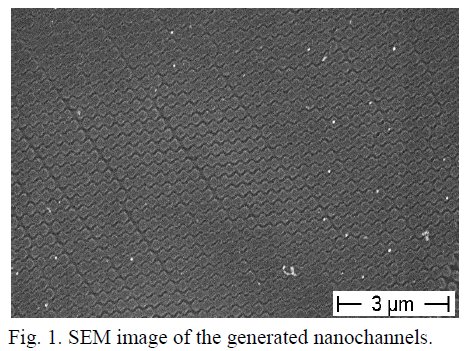|
Plenary
Lecture
Noble Metal Nanoparticles: From Mass
Production to Applications

Assistant Professor Frank Hubenthal
Institut fur Physik and Center for
Interdisciplinary Nanostructure Science and Technology –
CINSaT
Universitat Kassel, Heinrich-Plett-Strae 40
D-34132 Kassel, Germany
E-mail:
hubentha@physik.uni-kassel.de
Abstract: In this presentation a general
introduction in the unique optical properties of noble
metal nanoparticles will be given. It will be shown, how
the ultrafast electron dynamics in the nanoparticles can
be exploited to precisely tailor their morphology and,
hence, their optical properties. Afterwards, different
synthesis techniques are explained and a variety of
applica-tions of noble metal nanoparticles will be
discussed.
After the introduction in the unique optical properties
of noble metal nanoparticles, three dif-ferent physical
preparation techniques are presented. For example, a new
route for mass fabri-cation of metal nanoparticles with
monodisperse shape and narrow size distribution in pure
water [1]. For this purpose, we have combined pulsed
laser ablation with the technique of selective laser
tailoring. I demonstrate that we can easily narrow the
width of the initially broad size distribution of the
generated nanoparticles from ó = 32% to ó = 20% in a
single irradiation step and without a significant change
of the mean nanoparticle radius [1].
In the second part of my talk, I demonstrate the
preparation and tailoring of noble metal nanoparticles
on substrates. Such tailored nanoparticles have a wide
range of applications, for example in biosensing,
confocal microscopy, or for surface enhanced
spectroscopy tech-niques. Examples, were tailored gold
and silver nanoparticles have been successfully applied
for surface enhanced Raman spectroscopy will be given
[2].
Finally, experiments aiming at a parallel generation of
sub-diffraction sized nanostructures in fused silica
will be presented. The key point of these experiments is
the electromagnetic near field in the vicinity of highly
ordered triangular nanoparticles on substrates, prepared
by nanosphere lithography. The near field is exploited
to overcome locally the abla-tion threshold of the fused
silica sub-strate. For this purpose, supported
trian-gular gold nanoparticle arrays have been
irradiated with a single 35 fs pulse of a Ti:sapphire
multipass amplifier (ë = 790 nm). Depending on the laser
fluence and polarisation direction, sub-diffraction
sized nanostructures have been gener-ated [3]. An
example of such a structure is displayed in figure 2. It
shows nano-channels with a mean depth of 5 nm, a width
of 95 nm, but with a length of up to 10 ìm.

Brief Biography of the Speaker:
PD Dr. Frank Hubenthal studied initially engineering and
afterwards physics at the university of Kassel in
Germany. He did his diploma work under supervision of
Prof. Dr. G. Kraft, in the biophysics group at the
center for heavy ion research in Darmstadt, Germany.
After receiving the diploma in 1997, he switched the
topic and investigated anisotropic thin magnetic films
under the supervision of Prof. Dr. K. Roll. In 2001 he
received his PhD from the university of Kassel.
After a short stay in an engineering group, Frank
Hubenthal gets in 2001 a position as a junior scientific
researcher in the group of Prof. Dr. F. Trager, again at
the university of Kassel, Germany. He investigated,
among others, the ultrafast electron dynamics of noble
metal nanoparticles and received in this field his
habilitation in 2007. Also in 2007 he was elected as a
Privatdozent (private lecturer/assistant professor) at
the university of Kassel.
In the last years Frank Hubenthal extended his research
and investigated possible applications of tailored noble
metal nanoparticles as biochemical detection systems.
This includes the detection of molecules by surface
enhanced Raman spectroscopy (SERS) and the detection of
molecule binding using the metal nanoparticles as
surface plasmon resonance sensors. In addition, he
investigated the effect of heavy ion bombardment induced
strand breaks of DNA, by extended scanning probe
microscopy (SPM) measurements. The obtained results are
a first step, to explain the high efficiency of heavy
ion bombardment in cancer therapy.
In recent years, Frank Hubenthal has been published a
variety of papers in quiet different fields, such as
ultrafast electron dynamics of noble metal
nanoparticles, tailoring and mass production of noble
metal nanoparticles, stresses in thin films, SERS, and
ion induced damages of DNA. Furthermore, he is the
author of a book chapter with the title: Noble Metal
Nanoparticles: Synthesis and Optical Properties. (to
appear in: Comprehensive Nanoscience and Technology,
Elsevier), and co-organizer of the workshop:
"Photophysics of Nanoscale Systems", held during the
international conference: "Fundamentals of Laser
Assisted Micro– & Nanotechnologies, FLAMN 10", 05. –
08.06.2010 in St. Petersburg, Russia.
|

